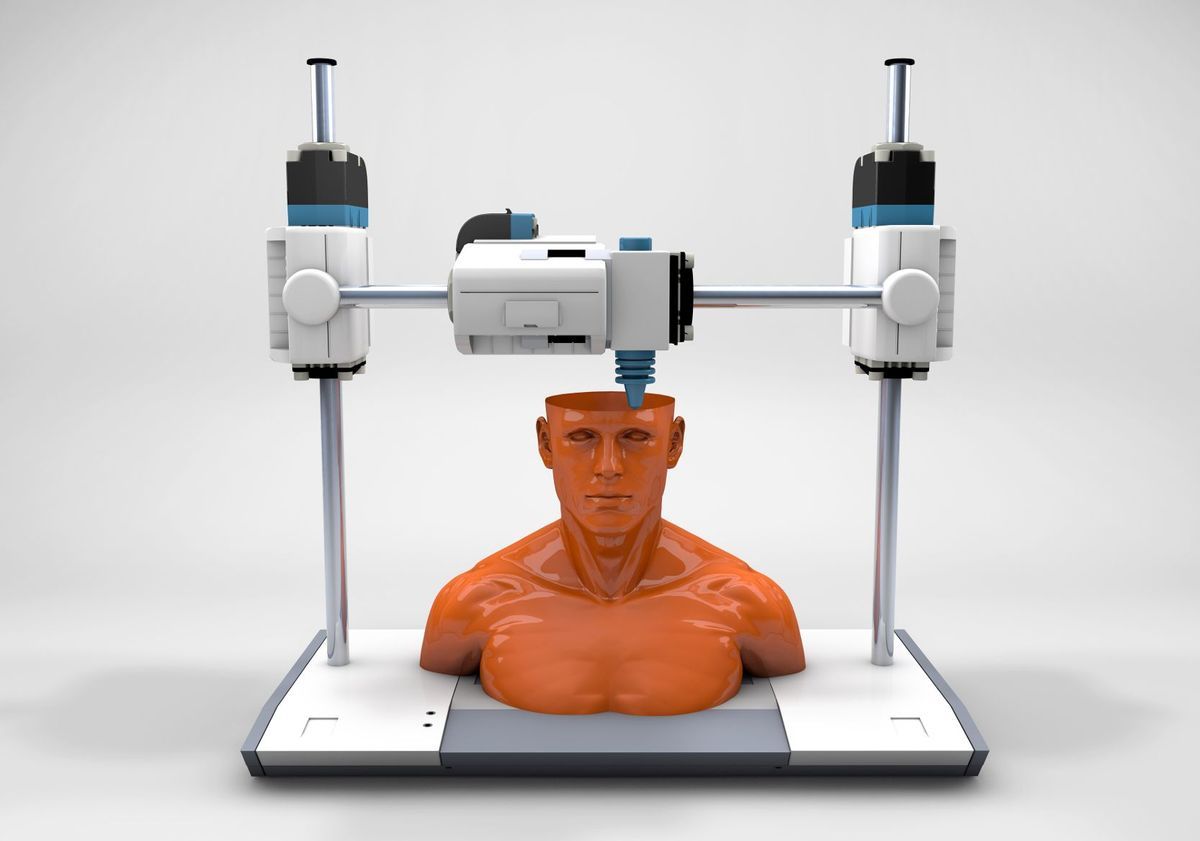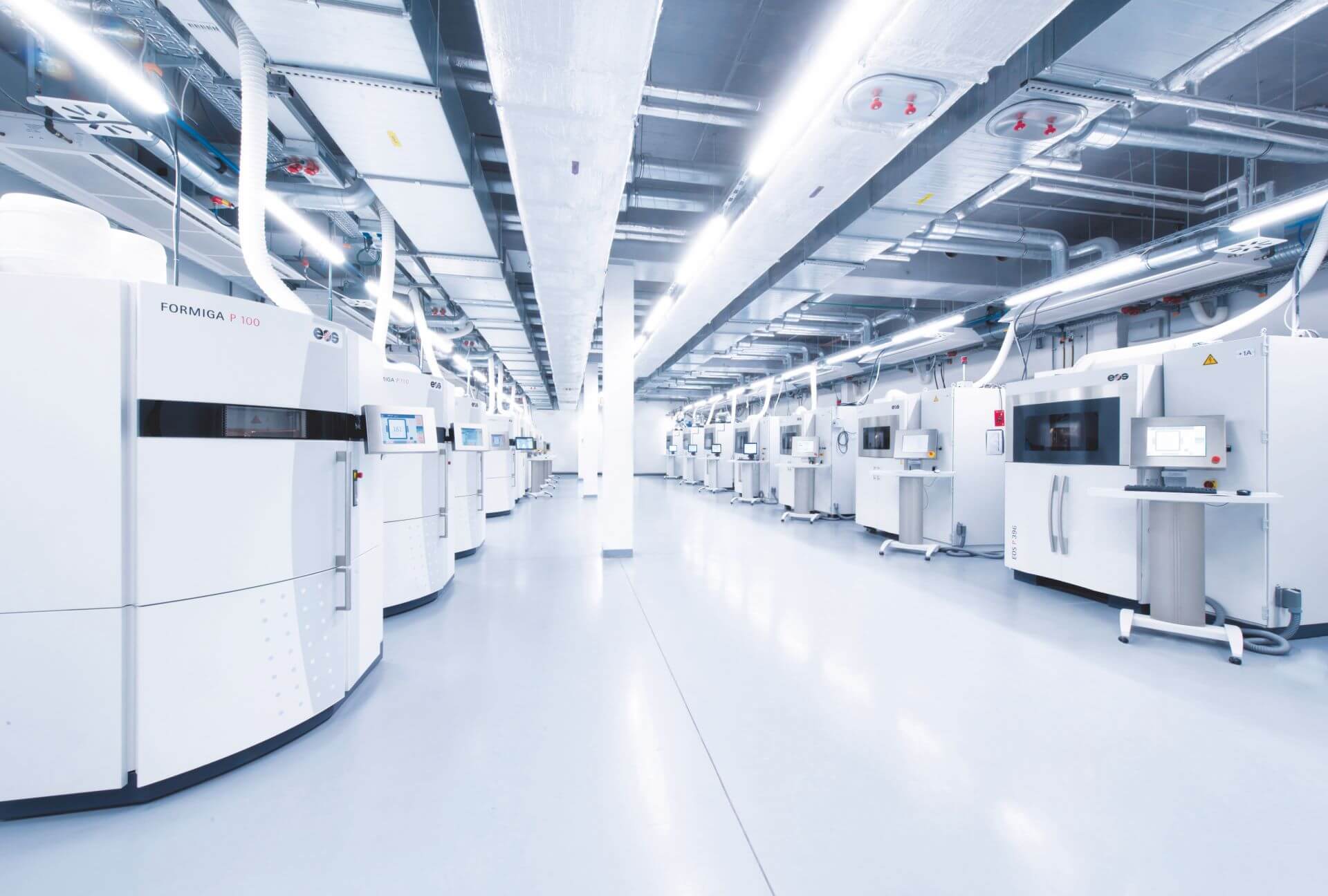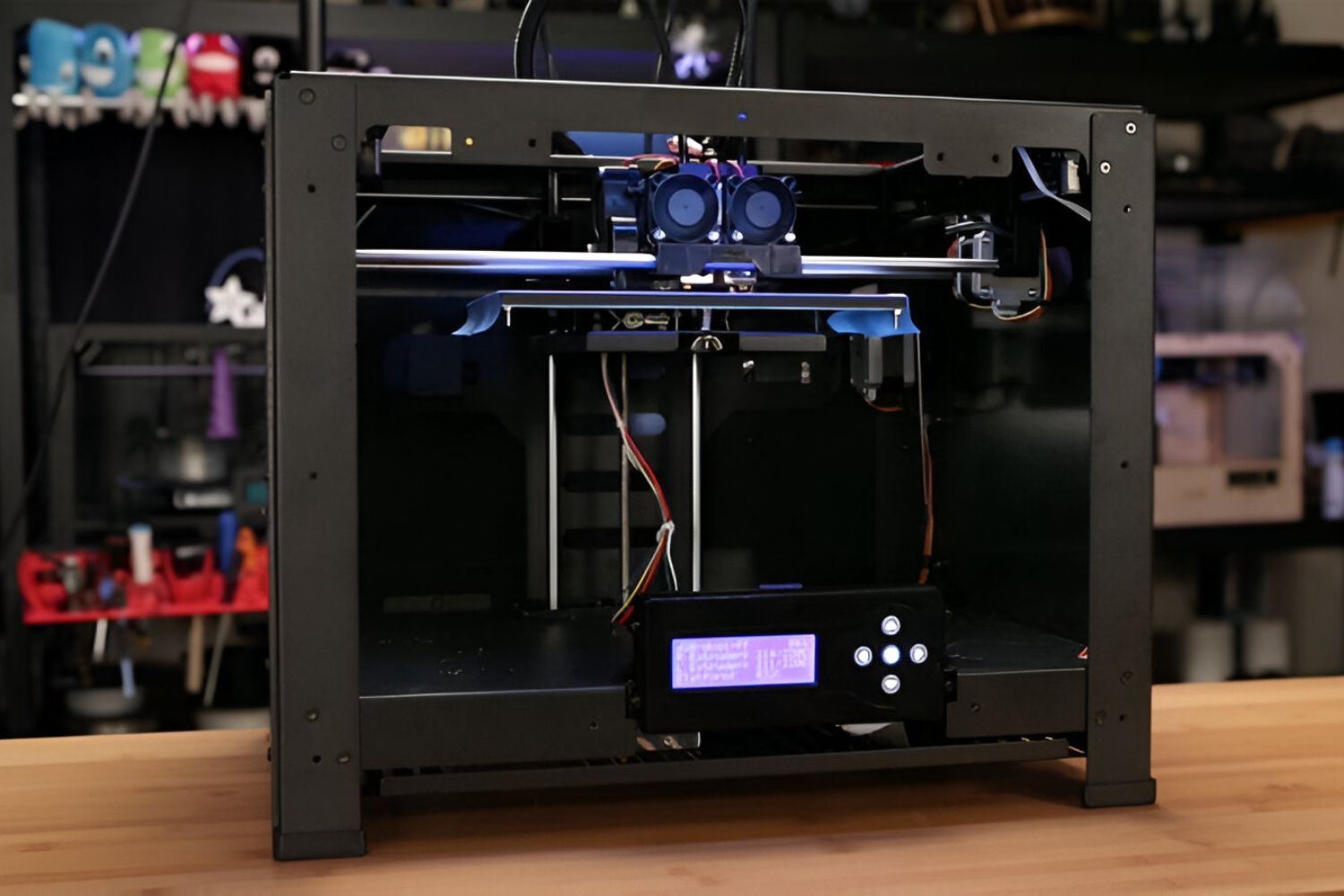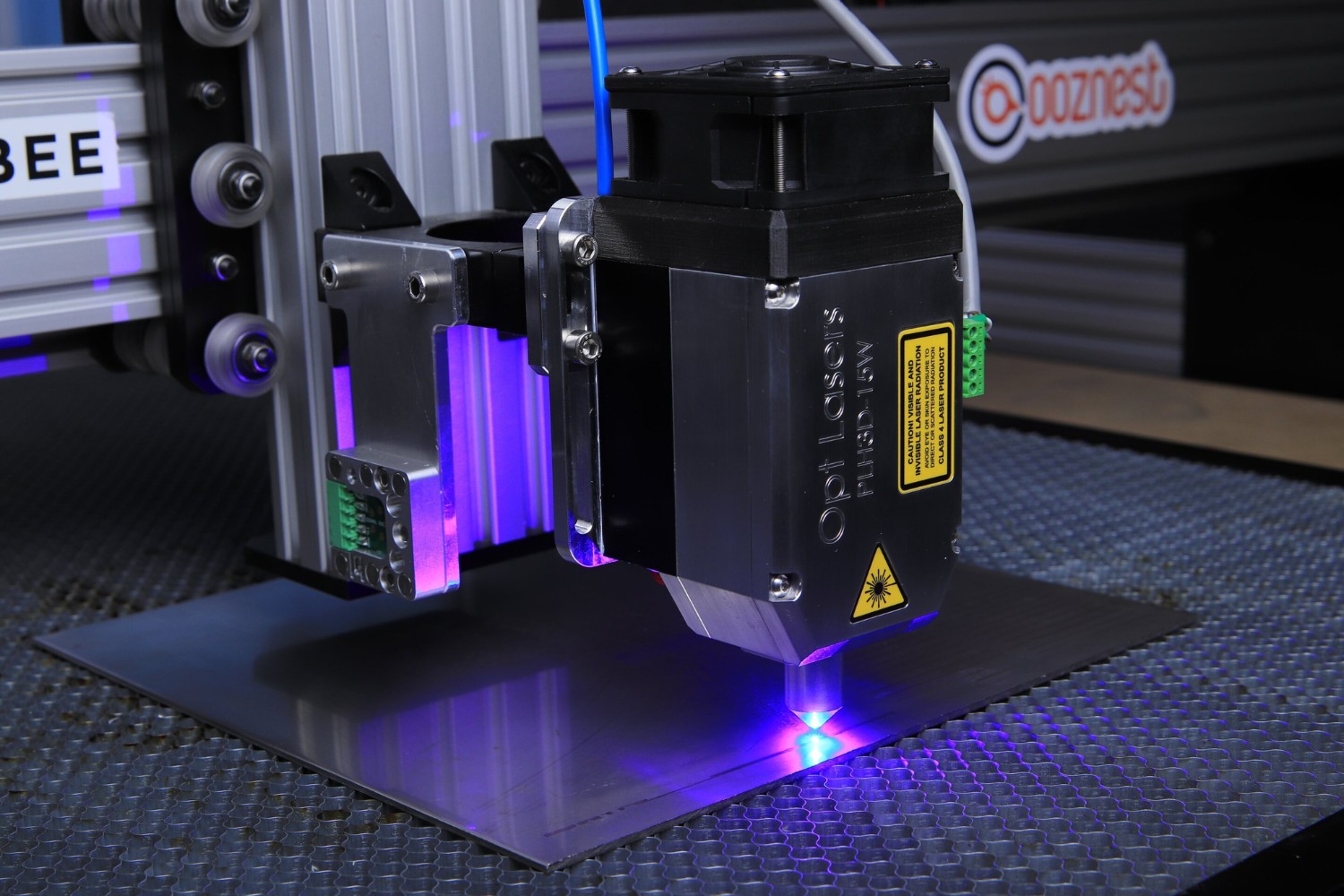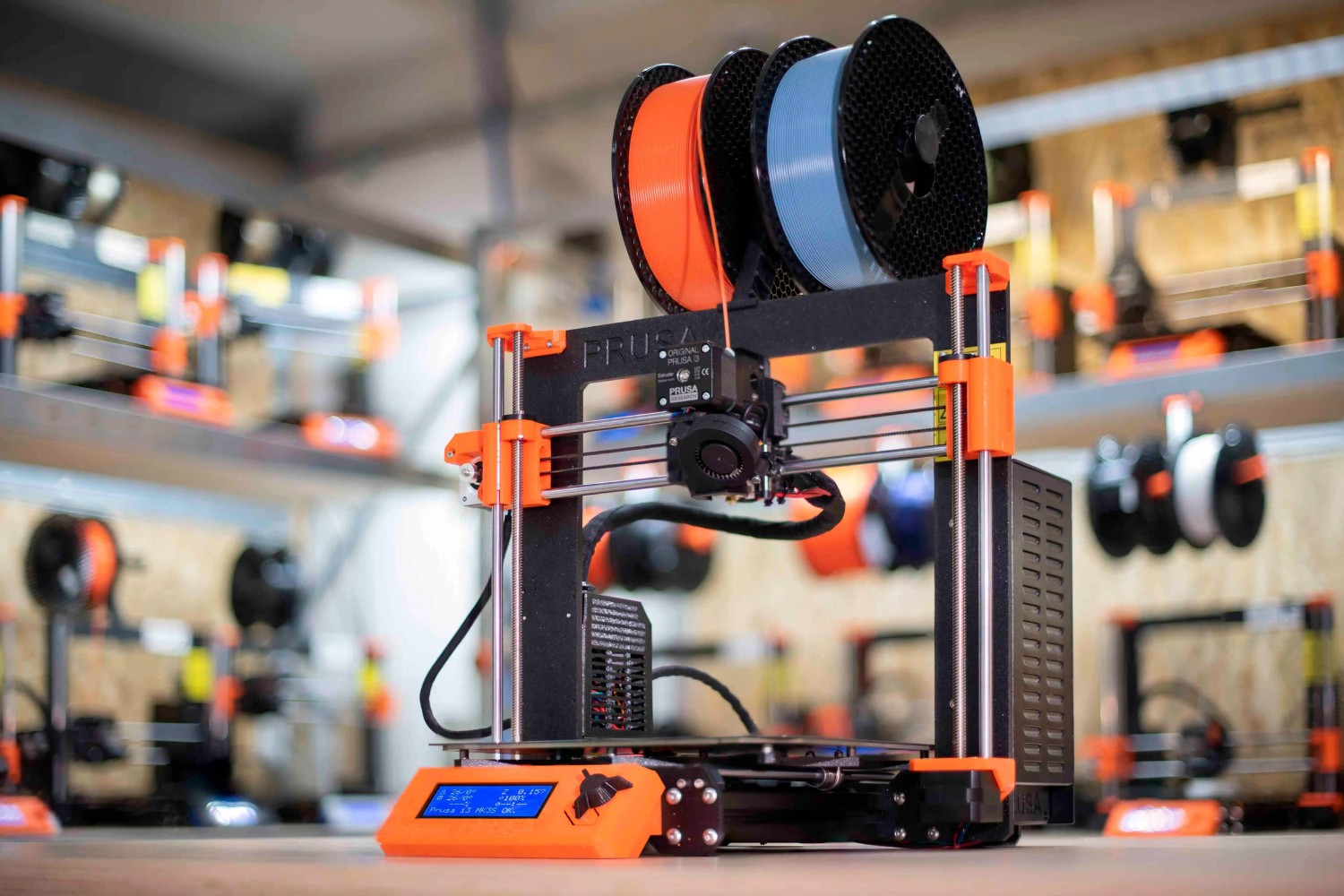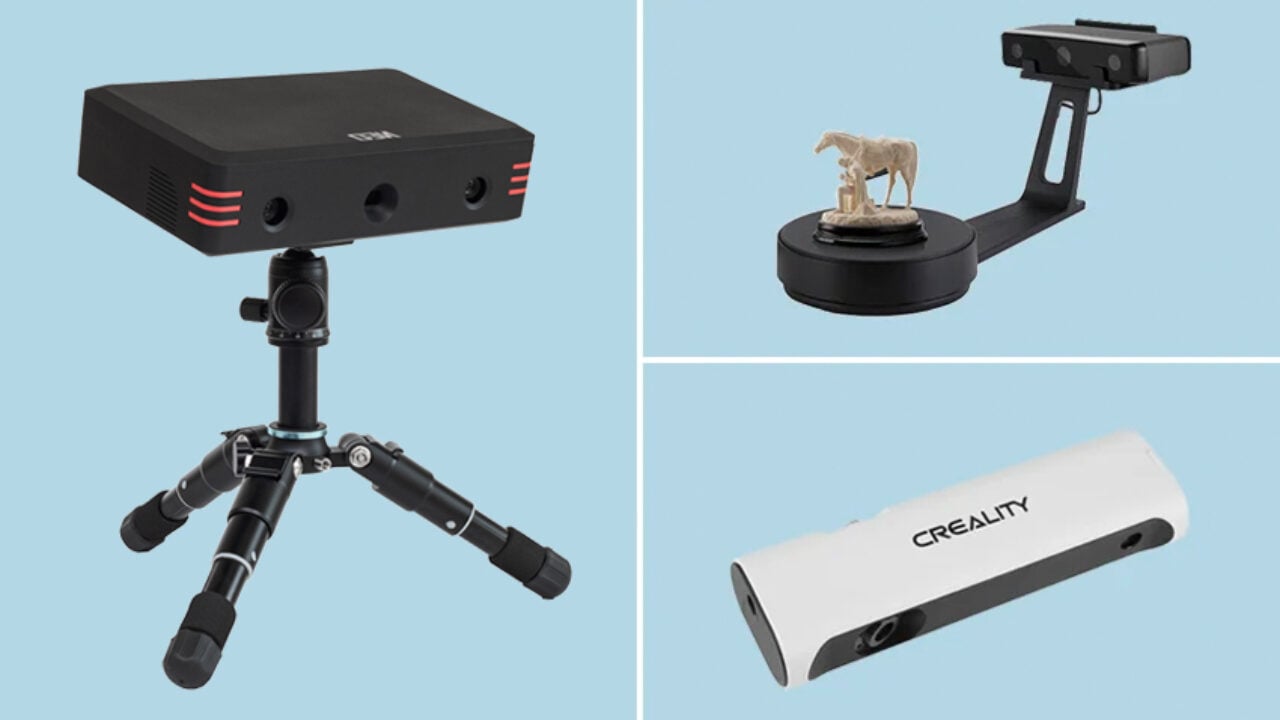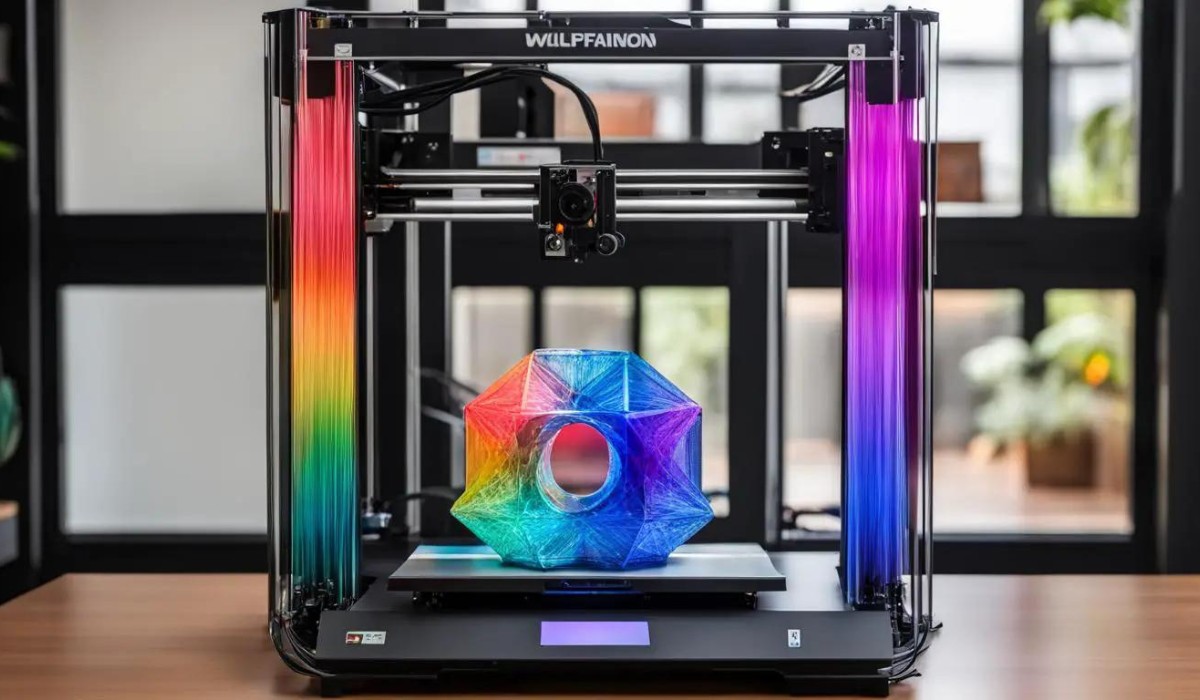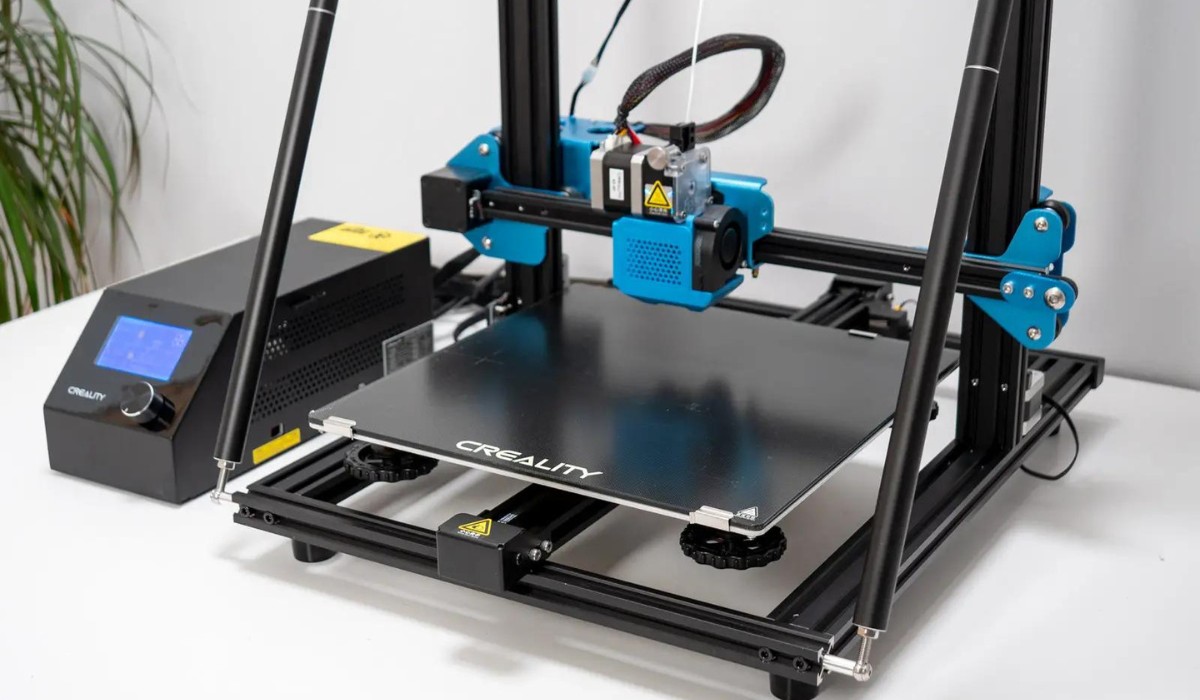Head and Face
The head and face are intricate parts of our anatomy that can now be replicated with incredible accuracy using 3D printing technology. From the skull to the facial features, the possibilities are endless.
One of the most remarkable breakthroughs in 3D printing is the creation of customized prosthetic facial parts. Individuals who have suffered from facial trauma or congenital deformities can now benefit from state-of-the-art 3D printed solutions. These prosthetics are designed to fit perfectly and restore both functionality and aesthetics, giving people a new lease on life.
Beyond prosthetics, 3D printing has also revolutionized the field of craniofacial surgery. Surgeons can now produce patient-specific models of the skull, allowing for meticulous planning of complex procedures. This level of precision reduces surgical risks and improves overall outcomes.
Furthermore, facial reconstruction after cancer surgery or accidents has been significantly improved by 3D printing. Surgeons can use detailed 3D models to precisely map out facial structures and guide the reconstruction process. This technology facilitates more accurate results and enhances patient satisfaction.
Another exciting application of 3D printing in the head and face area is the creation of realistic facial prosthetics for movie characters and theater productions. These prosthetics can be custom-designed and printed, providing an incredibly lifelike appearance for actors and performers.
In summary, the advancements in 3D printing technology have made it possible to replicate and restore various parts of the head and face. From facial prosthetics for medical purposes to intricate models for surgical planning and even for theatrical use, 3D printing is transforming the way we address issues related to the head and face.
Ears and Nose
Thanks to 3D printing, it is now possible to create custom-designed ears and noses that are tailored to each individual’s unique anatomy. This breakthrough technology has tremendous potential in the fields of reconstructive surgery and prosthetics.
For patients who have lost their ears or noses due to accidents, tumors, or congenital defects, 3D printing offers a groundbreaking solution. By using detailed scans of the remaining ear or nose, a 3D model can be created and then printed layer by layer to create a prosthetic that matches the patient’s exact specifications.
These 3D printed prosthetic ears and noses are not only incredibly realistic in appearance but also restore functionality. They can be attached securely to the patient’s skin using medical-grade adhesive or implanted using surgical techniques. This innovative approach allows individuals to regain their facial symmetry and confidence.
In addition to prosthetics, 3D printing is also used in research and development for creating artificial ears and noses. Scientists are exploring the possibilities of using biocompatible materials and cells to print biological tissue, which could potentially revolutionize the field of regenerative medicine.
Furthermore, the development of 3D printed cartilage scaffolds has opened new avenues for ear and nose reconstruction. By using the patient’s own cells, these scaffolds can support the growth of new tissue and ultimately result in a functional and natural-looking ear or nose.
In summary, 3D printing has brought incredible advancements to the field of ear and nose reconstruction. From creating custom prosthetics for individuals who have lost these facial features to research on regenerative medicine and tissue engineering, this technology is transforming the possibilities for restoring form and function to the ears and noses of patients around the world.
Eyes
The human eye is a complex and delicate organ, and restoring vision has always been a significant challenge. However, advancements in 3D printing technology have opened up new possibilities for creating artificial eyes and improving visual outcomes for patients.
One of the exciting applications of 3D printing in the field of ophthalmology is the creation of customized ocular prosthetics. These prosthetic eyes are meticulously designed based on digital scans of the patient’s eye socket, resulting in a realistic and comfortable fit. By replicating the natural appearance and movement of the eye, these prosthetics help individuals regain their confidence and improve their quality of life.
In addition to prosthetics, 3D printing is also utilized in the production of surgical models for complex eye procedures. Surgeons can use these models to plan and practice intricate surgeries, ensuring precise and successful outcomes. This technology has the potential to revolutionize surgical training and enhance patient safety.
Moreover, 3D printing is being explored for the development of artificial corneas. The cornea plays a crucial role in focusing light onto the retina, and corneal transplantation is often the only solution for patients with corneal diseases or injuries. With 3D printing, researchers are working towards creating biofabricated corneas using a patient’s own cells, which could eliminate the need for donor corneas and reduce the risk of rejection.
Another fascinating application of 3D printing in ophthalmology is in the production of personalized eyewear. By scanning the individual’s face and head, eyewear can be 3D printed to achieve a perfect fit and optimal comfort. This technology allows for unique designs and customization while addressing any specific visual needs.
In summary, 3D printing has introduced groundbreaking advancements in the field of ophthalmology, from creating custom ocular prosthetics to producing surgical models and exploring biofabrication of corneas. With continued research and innovation, 3D printing holds the potential to revolutionize vision restoration and improve outcomes for patients with eye-related conditions.
Teeth and Jaw
3D printing has revolutionized the field of dentistry, providing innovative solutions for creating custom dental prosthetics, orthodontic appliances, and even jaw bone reconstruction.
One of the most significant advancements in dental 3D printing is the creation of custom-made dental prosthetics, such as crowns, bridges, and dentures. Traditionally, these prosthetics were fabricated in a dental laboratory, which could take several weeks. With 3D printing, the process is faster and more precise. Dentists can now scan the patient’s teeth, design the prosthetic digitally, and then 3D print it using biocompatible materials. This not only reduces the turnaround time but also ensures a perfect fit and natural appearance.
In addition to dental prosthetics, 3D printing has revolutionized orthodontics through the production of clear aligners. These aligners are a popular alternative to traditional metal braces, as they are virtually invisible and can be easily removed for eating and oral hygiene. By using 3D printing technology, orthodontists can create a series of custom aligners based on digital scans of the patient’s teeth. This allows for precise treatment planning and efficient teeth straightening.
Moreover, 3D printing has proven to be invaluable in jaw bone reconstruction. In cases of bone loss or trauma, surgeons can now use 3D printed patient-specific models to plan complex jaw surgeries. These models allow for meticulous analysis and preoperative preparation, resulting in better surgical outcomes. Additionally, 3D printed implants and prosthetics can be customized to fit the patient’s unique jaw structure, promoting stability and long-term functionality.
Another exciting development in the field of dental 3D printing is the exploration of bioprinting for tooth regeneration. Researchers are attempting to utilize a patient’s own stem cells and biocompatible materials to create artificial teeth that can be implanted and integrated into the jawbone. Although still in the experimental stage, this technology holds tremendous potential for restoring missing teeth naturally.
In summary, 3D printing has revolutionized dentistry by enabling the production of custom dental prosthetics, clear aligners for orthodontic treatment, personalized jaw bone models for reconstructive surgery, and the exploration of tooth regeneration. As technology continues to advance, 3D printing will play an increasingly significant role in achieving optimal oral health and enhancing patients’ smiles.
Neck and Spine
The neck and spine are critical components of our skeletal system, supporting the head and allowing for movement. When it comes to addressing injuries or deformities in these areas, 3D printing technology offers remarkable advancements in customized solutions.
One significant application of 3D printing in the neck and spine area is the creation of patient-specific implants. Traditional implants used in spinal surgeries are often limited in size and shape options. With 3D printing, surgeons can now design and fabricate implants that precisely match the patient’s unique anatomical needs. These custom implants not only provide a better fit but also promote improved fusion and patient outcomes.
Along with implants, 3D printing is instrumental in producing personalized surgical guides. These guides assist surgeons during intricate spinal procedures by indicating the optimal placement of screws and accurately guiding the surgical instruments. This technology enhances surgical precision, reduces operating time, and minimizes the risk of complications.
Beyond surgical applications, 3D printing is contributing to the development of innovative spinal braces and orthotic devices. These custom-made braces offer improved support and alignment, reducing pain and optimizing spinal function for individuals with conditions like scoliosis or spinal injuries.
Moreover, 3D printing is being explored for the creation of spinal models for preoperative planning and education. Surgeons can use these 3D printed replicas to simulate complex procedures, visualize the affected area, and communicate with patients more effectively. This technology enhances patient understanding and helps facilitate informed decision-making.
Additionally, the field of spine research has benefited from 3D printing, as it allows for the fabrication of intricate anatomical models for studying spinal conditions and developing novel treatment approaches. These models provide researchers with a tangible representation of the spine, enabling better insights and advancements in the field.
In summary, 3D printing has significantly advanced the treatment options available for injuries and deformities in the neck and spine. From patient-specific implants and surgical guides to custom braces and educational models, this technology is revolutionizing the field of spinal care and improving outcomes for patients worldwide.
Chest and Ribs
The chest and ribs play a crucial role in protecting vital organs and supporting the respiratory system. When injuries or deformities occur in these areas, 3D printing technology offers promising solutions for personalized treatment and restoration.
One of the key applications of 3D printing in the chest and ribs is the creation of custom-made implants for chest wall reconstructions. These implants are designed to fit the patient’s specific anatomy, whether it involves repairing fractures, treating tumors, or correcting deformities. Through 3D printing, surgeons can fabricate implants with intricate details and tailored dimensions, promoting optimal functionality and aesthetics.
In addition to implants, 3D printing assists in the production of patient-specific surgical models for preoperative planning. Surgeons can use these highly accurate models to analyze the affected area, simulate procedures, and strategize the best approach. This technology allows for the precise placement of screws, shaping of plates, and reconstruction of the chest and ribs, ultimately improving surgical outcomes.
Besides reconstructive procedures, 3D printing has been instrumental in developing innovative medical devices such as prosthetic ribs and sternal implants. These devices are created based on patient scans to address specific conditions such as thoracic fractures or sternum deformities. By utilizing 3D printing technology, the devices can be custom-fitted and offer improved comfort, support, and mobility.
Furthermore, 3D printing has enabled the production of patient-specific thoracic braces for the treatment of conditions like pectus excavatum or barrel chest. These braces apply pressure to the chest wall, gradually reshaping it over time. With 3D printing, precise measurements and adjustments can be made to ensure the brace fits perfectly and provides the necessary corrective force.
Moreover, 3D printing is being explored for creating realistic chest models for educational and training purposes. These models mimic the texture and structure of the chest, providing healthcare professionals with a tangible tool to practice procedures, enhance their skills, and educate patients about potential interventions.
In summary, 3D printing is revolutionizing the approach to chest and rib injuries and deformities through customized implants, surgical planning models, medical devices, and thoracic braces. By providing tailored solutions, this technology is improving patient outcomes and quality of life in the chest and rib region.
Shoulders and Arms
The shoulders and arms are essential for our mobility and daily activities. When injuries or conditions affect these areas, 3D printing technology offers innovative solutions for customized treatment and improved functionality.
One significant application of 3D printing in the shoulders and arms is the creation of custom prosthetics. Whether it’s a hand, forearm, or entire arm, 3D printing allows for the fabrication of prosthetics that perfectly fit the individual’s unique anatomy. These prosthetics are not only highly functional but also lightweight and comfortable, enhancing the overall quality of life for individuals with limb loss.
In addition to prosthetics, 3D printing is also used in the production of personalized orthotic devices for conditions like shoulder instability or brachial plexus injuries. These devices provide targeted support and stabilization, helping patients regain strength, range of motion, and functionality in their shoulders and arms.
Furthermore, 3D printing is proving to be beneficial in the field of upper extremity rehabilitation. By printing custom splints and braces, therapists can aid in the recovery process and promote proper alignment and healing. These personalized devices provide support and protection while allowing for necessary movement and flexibility during rehabilitation exercises.
Another exciting development in the field of 3D printing is the creation of assistive devices for individuals with disabilities such as 3D printed exoskeletons. These exoskeletons can provide mechanical support to the shoulders and arms, enabling individuals with limited mobility to perform daily tasks and even engage in physical activities.
In addition to assistive devices, 3D printing has been utilized in the production of surgical instruments for complex shoulder and arm procedures. Surgeons can use patient-specific surgical guides and models to plan and execute surgeries with greater precision, reducing the risk of complications and ensuring optimal outcomes.
In summary, 3D printing has transformed the field of shoulder and arm care by offering customized prosthetics, orthotic devices, rehabilitative tools, assistive devices, and surgical instruments. With its ability to cater to individual needs and provide innovative solutions, this technology is significantly improving the quality of life and functional outcomes for individuals with shoulder and arm-related conditions.
Hands and Fingers
The intricate structure and dexterity of our hands and fingers are essential for performing everyday tasks. When individuals experience hand or finger injuries, 3D printing technology offers groundbreaking advancements in the field of prosthetics and rehabilitation.
One of the most significant applications of 3D printing in the hands and fingers is the production of customized prosthetics. These prosthetics are designed to mimic the functionality and natural appearance of the missing hand or fingers. By scanning the remaining hand and utilizing 3D printing technology, prosthetics can be precisely tailored to fit the individual’s unique anatomy. This personalized approach allows for improved function, comfort, and a higher level of integration into daily activities.
In addition to prosthetics, 3D printing is revolutionizing the field of hand rehabilitation through the creation of assistive devices. These devices aid in the recovery and improvement of hand and finger movements. Custom splints and braces can be 3D printed to provide support, limit movement for specific exercises, and promote proper alignment during the rehabilitative process.
Furthermore, 3D printing is advancing the capabilities of upper limb prosthetics by incorporating advanced technologies such as myoelectric control. Myoelectric prosthetics use electrodes to detect muscle signals in the residual arm, allowing for more intuitive and precise control over individual finger movements. With the help of 3D printing, these myoelectric prosthetics can be custom-designed and manufactured to optimize performance and enhance the user’s quality of life.
Another exciting development in the field of hand and finger care is the use of 3D bioprinting to create tissue-engineered replacements for damaged or missing fingers. Although still in the experimental stage, researchers are making significant strides in printing living cells and biomaterials to reconstruct fingers. This cutting-edge technology has the potential to provide functional and natural finger replacements in the future.
In summary, 3D printing has revolutionized the field of hand and finger care through the production of customized prosthetics, the creation of assistive devices for rehabilitation, the incorporation of advanced technologies in upper limb prosthetics, and the advancements in tissue engineering through bioprinting. This technology is transforming lives by improving hand function and restoring the essential abilities of individuals with hand and finger-related conditions.
Hips and Pelvis
The hips and pelvis provide stability, support, and mobility to our bodies. When injuries or conditions affect these areas, 3D printing technology offers innovative solutions for customized treatment and restoration.
One significant application of 3D printing in the hips and pelvis is the creation of custom implants for hip replacements. Traditional hip implants come in standard sizes, which may not always perfectly match a patient’s anatomy. With 3D printing, implants can be precisely designed and fabricated based on a patient’s specific measurements, ensuring a better fit and improved long-term outcomes. These personalized implants promote stability and functionality, reducing the risk of complications and enhancing the patient’s quality of life.
In addition to hip implants, 3D printing has proven to be valuable in pelvic reconstructions. Complex pelvic fractures or deformities can be challenging to address surgically. However, with 3D printing technology, surgeons can create patient-specific models and surgical guides to accurately plan and execute complex procedures. The precision provided by these models and guides leads to improved surgical outcomes and facilitates better patient recovery.
Besides reconstructive procedures, 3D printing is utilized in the production of orthotic devices for conditions such as hip dysplasia or pelvic floor dysfunction. Custom braces and supports can be 3D printed to provide targeted support, alignment, and rehabilitation. These devices help to alleviate pain, enhance stability, and optimize pelvic function for improved overall well-being.
Moreover, 3D printing is being explored for the creation of patient-specific models to aid in the education and training of healthcare professionals involved in hip and pelvic procedures. These realistic models enable surgeons to practice procedures, simulate complex anatomical structures, and enhance their skills in a safe and controlled environment.
In summary, 3D printing is revolutionizing the approach to hip and pelvic injuries and conditions through custom implants, surgical planning models, orthotic devices, and educational tools. By providing personalized solutions and improving surgical precision, this technology is transforming the field of hip and pelvic care, leading to better outcomes for patients worldwide.
Legs and Feet
The legs and feet are crucial for mobility and balance, and when individuals experience injuries or conditions in these areas, 3D printing technology offers remarkable advancements in the field of prosthetics and orthotics.
One of the most significant applications of 3D printing in the legs and feet is the development of custom-made prosthetic limbs. By utilizing 3D scanning technology and advanced software, prosthetics can be precisely designed and fabricated to match the specific anatomy and functional needs of the individual. These personalized prosthetics provide an exceptional fit, comfort, and mobility, enabling users to regain independence and engage in daily activities with greater ease.
In addition to prosthetics, 3D printing is transforming the production of orthotic devices for the legs and feet. Custom braces, ankle-foot orthoses (AFOs), and shoe inserts can be 3D printed to provide targeted support, alignment correction, and improved biomechanical function. These devices enhance stability, reduce pain, and optimize gait for individuals with conditions such as foot drop, plantar fasciitis, or lower limb malalignment.
Furthermore, 3D printing has opened new avenues for the development of specialized athletic footwear. Athletes with specific foot and leg needs can now benefit from custom-designed and 3D printed shoes that provide optimal support, cushioning, and performance enhancement. These personalized shoes can improve comfort, reduce the risk of injuries, and contribute to better athletic performance.
Moreover, 3D printing is being explored for the production of patient-specific surgical models and guides for orthopedic procedures involving the legs and feet. These 3D printed models allow surgeons to plan and practice complex procedures, improving surgical precision and potentially reducing operative time and postoperative complications.
Additionally, the field of regenerative medicine holds promise for 3D printing in the legs and feet. Researchers are investigating the use of 3D bioprinting to create living tissue constructs that can aid in the regeneration and replacement of damaged or missing bone, cartilage, and soft tissues. This groundbreaking technology has the potential to revolutionize the treatment of conditions such as bone defects or osteoarthritis.
In summary, 3D printing has revolutionized the field of legs and feet care through the creation of personalized prosthetics, orthotic devices, athletic footwear, surgical models and guides, and the exploration of regenerative solutions. This technology is improving mobility, functionality, and quality of life for individuals with leg and foot-related conditions, enabling them to lead more active and fulfilling lives.
Internal Organs
While the concept of 3D printing internal organs may seem like something out of a science fiction movie, advancements in this field are rapidly progressing, offering immense potential for medical breakthroughs.
One of the most significant areas of research in 3D printing is the creation of organ prototypes. Scientists and researchers are exploring the use of bioink, a substance composed of living cells and biomaterials, to print functional tissue constructs of organs such as kidneys, liver, heart, and lungs. These constructs can be used in drug testing, disease modeling, and transplantation research, allowing for a greater understanding of organ function and the development of novel treatments.
Another area of focus is the fabrication of personalized organ models for surgical planning. 3D printing allows for the creation of exact replicas of a patient’s internal organs, providing a tangible and accurate representation of their anatomy. Surgeons can use these models to analyze and prepare for complex surgeries, enhancing precision and reducing potential risks.
Furthermore, 3D printing is playing a vital role in the production of customized medical implants for internal organs. This includes implants for patients suffering from conditions such as urinary incontinence, bladder disorders, or damage to the digestive system. 3D printing enables the creation of patient-specific implants that are designed to fit seamlessly within the existing anatomy, promoting improved organ function and quality of life.
Additionally, 3D printing is being explored for the creation of bioprinted vascular networks that mimic the intricate blood vessel structures within organs. These vascular networks have the potential to enable the survival and integration of 3D printed organs by providing necessary nutrients and oxygen to the cells.
In summary, 3D printing has the potential to revolutionize the field of internal organ medicine. From the creation of organ prototypes and personalized surgical models to the fabrication of custom implants and the development of bioprinted vascular networks, this technology is pushing the boundaries of medical research and treatment. While the complete realization of 3D printed functional organs for transplantation is still a goal for the future, the advancements made thus far hold tremendous promise for revolutionizing the field of internal organ care.







